

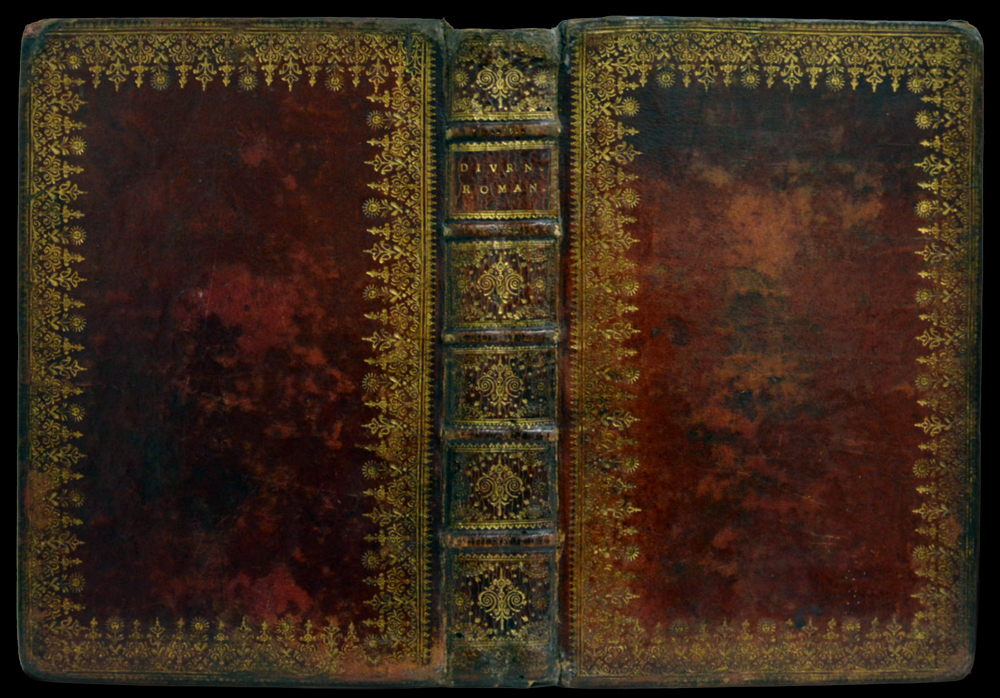
| The binding shown above recently surfaced on eBay, I show it here as it was presented by the seller, click on the picture to see an enlargement (see the eBay photos). The detail of the gold tooled decoration is not particularly sharp and even though this seemed to be most certainly from the workshops of Boyet, one could not be absolutely certain. Boyet was one of the most famous, if not the most famous bookbinder of his time, and his tools were often copied, particularly the iconic tools that he often used to decorate the spine compartments. However here in this example we see a fleuron in the center of the compartments that is different from all the examples that I could remember. I recognized it not from its use on spines but rather from it being used in decorative compositions found on the boards of Boyets retrospective bindings. I immediately attempted to compare these with those from the eBay example, the results looked promising. |
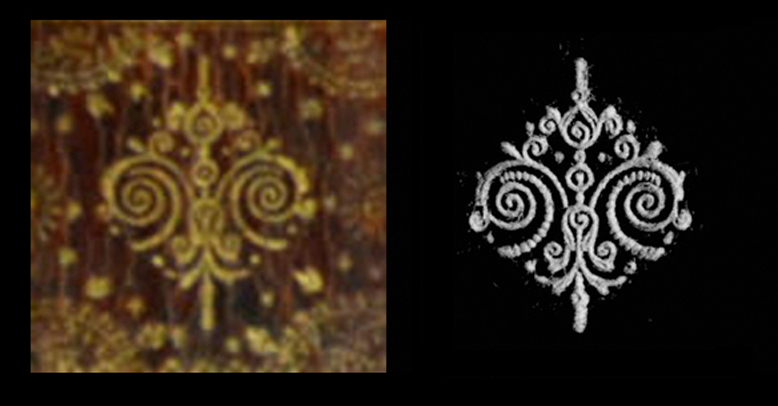
|
There was however one catch, this 1696 Breviary contained a hand written letter to Pope Pius VI, dated the 19th of August 1797, it was written on the first 2 free endpapers, half of the first and on both sides of the second, without an apparent ending. At this point in time the French Revolution was nearing an end. "In 1796 French Republican troops under the command of Napoleon Bonaparte invaded Italy and defeated the papal troops. The French occupied Ancona and Loreto. Pius VI sued for peace which was granted at Tolentino on 19 February 1797; but on 28 December 1797, in a riot blamed by papal forces on some Italian and French revolutionists, the popular brigadier-general Mathurin-Léonard Duphot, who had gone to Rome with Joseph Bonaparte as part of the French embassy, was killed and a new pretext was furnished for invasion. General Berthier marched to Rome, entered it unopposed on 10 February 1798, and, proclaiming a Roman Republic, demanded of the pope the renunciation of his temporal authority. Upon his refusal he was taken prisoner, and on 20 February was escorted from the Vatican to Siena, and thence to the Certosa near Florence. The French declaration of war against Tuscany led to his removal (he was escorted by the Spaniard Pedro Gómez Labrador, Marquis of Labrador) by way of Parma, Piacenza, Turin and Grenoble to the citadel of Valence, the chief town of Drôme where he died six weeks after his arrival, on 29 August 1799, having then reigned longer than any pope." https://en.wikipedia.org/wiki/Pope_Pius_VI Thus we see that the Pope was, by August 1797 no longer in a position of strength.The price of persuading the French intruder to head north again, agreed in the Treaty of Tolentino, was a massive indemnity, the removal of many works of art from the Vatican collections and the surrender to France of Bologna, Ferrara and the Romagna. I wonder then, if this letter was perhaps not as kind as it might have been, accusing the Pope of doing little to help the Catholics who suffered greatly during the Revolution. We do not know who wrote this letter, however one can assume that it was some highly placed official of the French Catholic Church. This letter, (shown below as it was presented by the seller) a possibly important historical document, risked to increase the value of this book, and as it happened the book sold for about twice the amount it might have normally, even if someone knew it was a Boyet. |
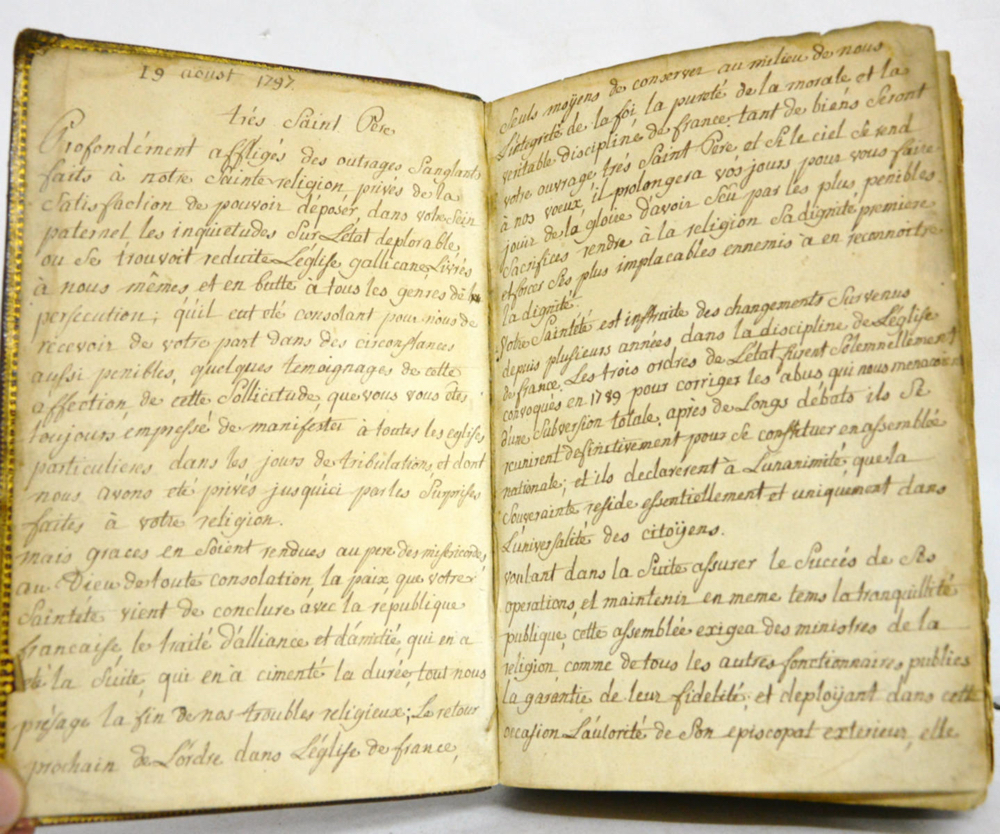
| The book arrived quickly in the mail and within a very short period of comparative analysis I was certain that it was indeed a binding from the workshops of Boyet. I decided to check the Bibliotheque Nationale to see if I could find in their bindings online and example of Boyets work. I discovered that they only have one, and this is perhaps one of the poorest examples that you could choose to represent the work of Boyet, a retrospective decoration on grainy leather. However I did discover that my previous biographical data for Boyet was incorrect, below I show the BnF bio followed by my paraphrase version in English. |
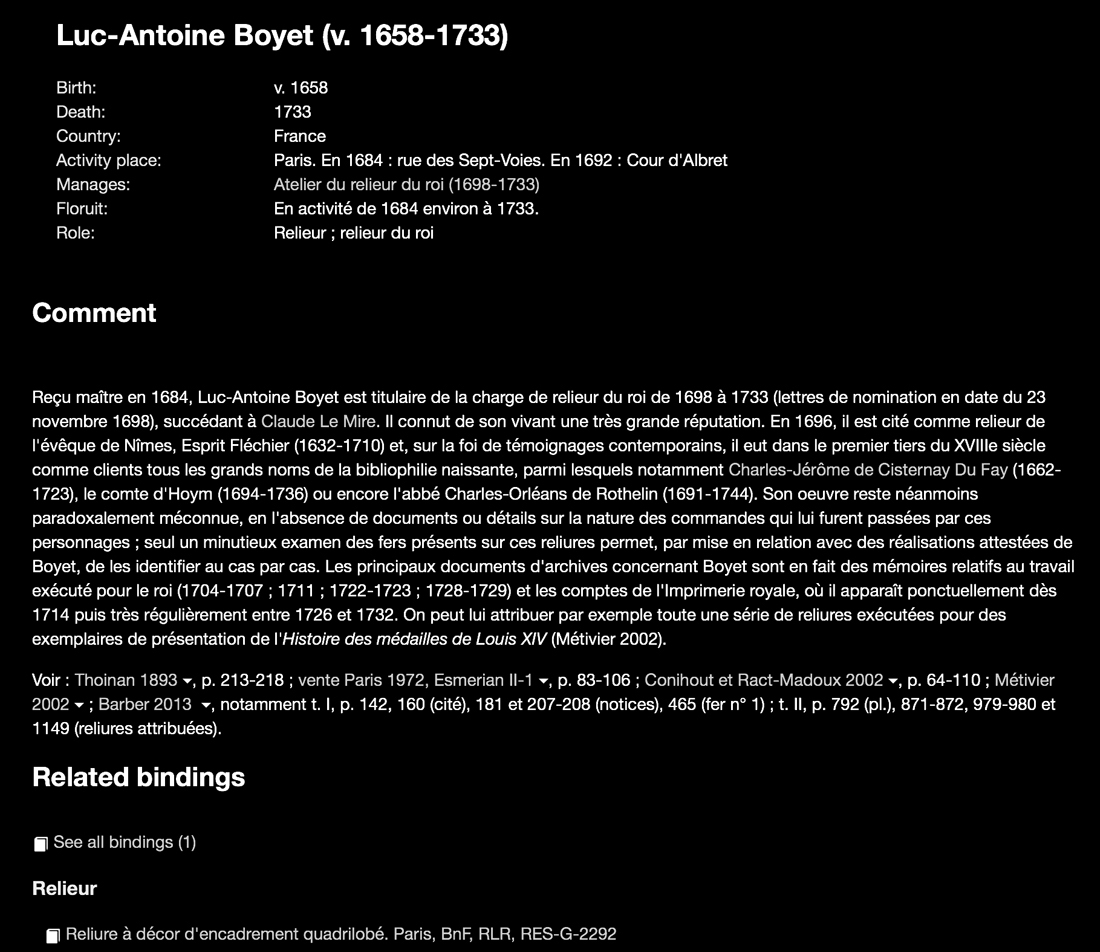
|
Luc-Antoine Boyet, completed his apprenticeship to officially become a Bookbinder in 1684. He was perhaps then about 26 years old and by the time he was 40 he arrived at the the highest level possible, acquiring the the position of the official bookbinder for the King, Louis XIV (documented 23 November 1698). He knew during his lifetime a very great reputation. In 1696, he was cited as binder of the Bishop of Nîmes, Esprit Fléchier (1632-1710) and, on the faith of contemporary testimonies, he had in the first third of the eighteenth century as clients, all the great names of the emerging bibliophiles, including Charles-Jerome Cisternay Du Fay (1662-1723), the Earl of Hoym (1694-1736) or the Abbot Charles-Orleans de Rothelin (1691-1744). Paradoxically, today his work remains little known. In the absence of documents or details on the nature of the orders placed on him by these famous book collectors; only a minute examination of the gold tooling present on presumed Boyet bindings and a thorough comparative study with proven Boyet examples, will finally allow the full scope of his work to be known.The main archival documents concerning Boyet are in fact memoirs relating to the work done for the king (1704-1707, 1711, 1722-1723, 1728-1729) and the accounts of the Imprimerie Royale, where he appeared punctually as early as 1714 then very regularly between 1726 and 1732. There exists bindings that can be attributed to Luc Antoine Boyet with certainty, for example a series of bindings executed for copies of presentation of the History of medals of Louis XIV (Métivier 2002). This description by the BnF made me smile, they say the Boyet's work is virtually unknown and that the only way to learn more about it, requires a careful study of the imprints that can be proven to derive from the tools of Boyet, exactly what I have been doing for more than 10 years An interesting detail in this information, that pertains to our 1696 Breviary, is the fact that in 1696 Boyet was cited as binder of the Bishop of Nîmes, Esprit Fléchier (1632-1710. Thus its possible that Boyet bound and decorated this book for Esprit Fléchier himself. |
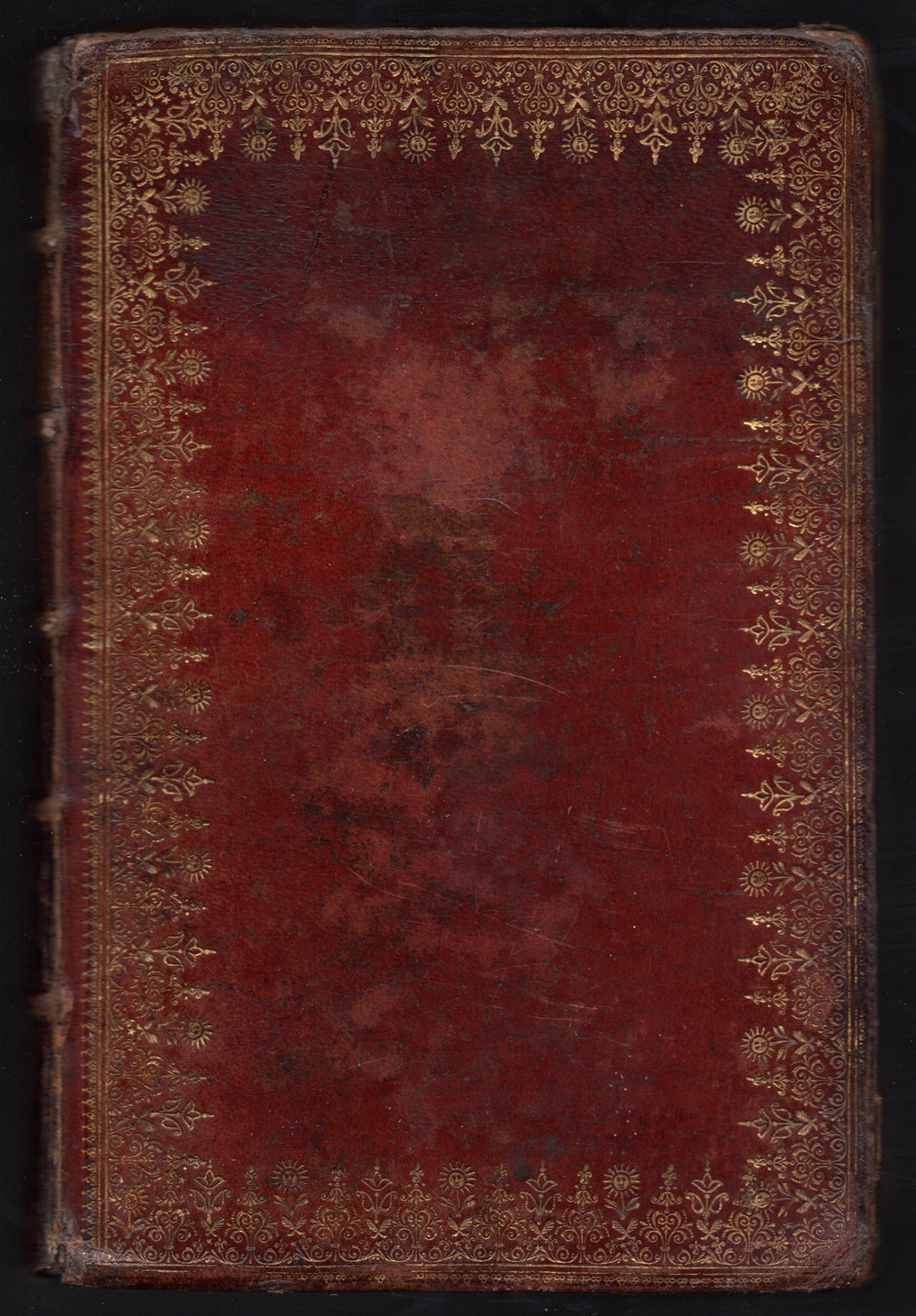
| Above I show an enlarged image of the front board and below I show a detail of the dentelle from the bottom row. although not as bright as most of the tooling and slightly worn, we can see here, some very clear impressions of these tools. Armed with a 1200 dpi scan there can be no mistaking the identity of these imprints, as tiny tell tail cuts are now visible. The width of the enlarged detail shown below is 22.5 millimeters, the hatching seen on the side of the sunflower head appears to be around 5 or 6 cuts per millimeter. |
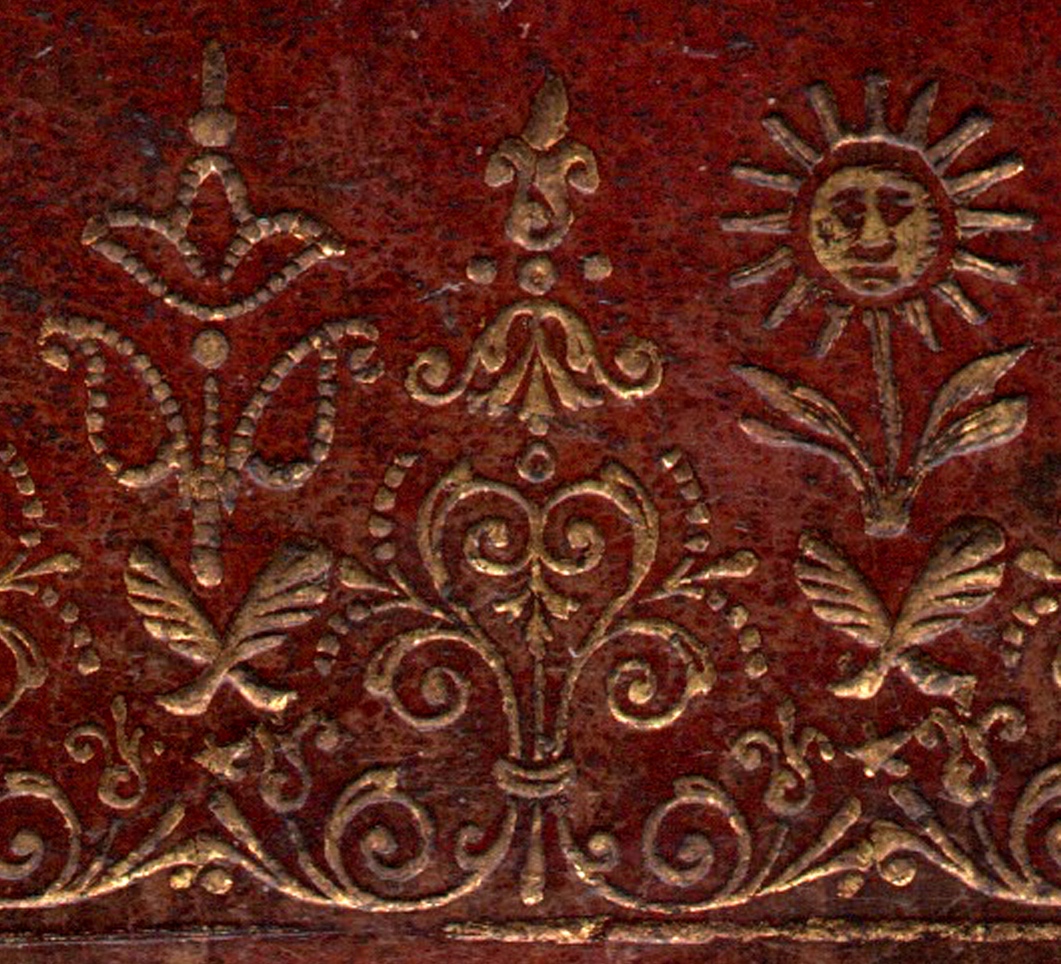
| Following the BnF reference (Métivier 2002) we find the detailed work of Jeanne-Marie METIVIER, in tracking down and identifying Boyets tools |
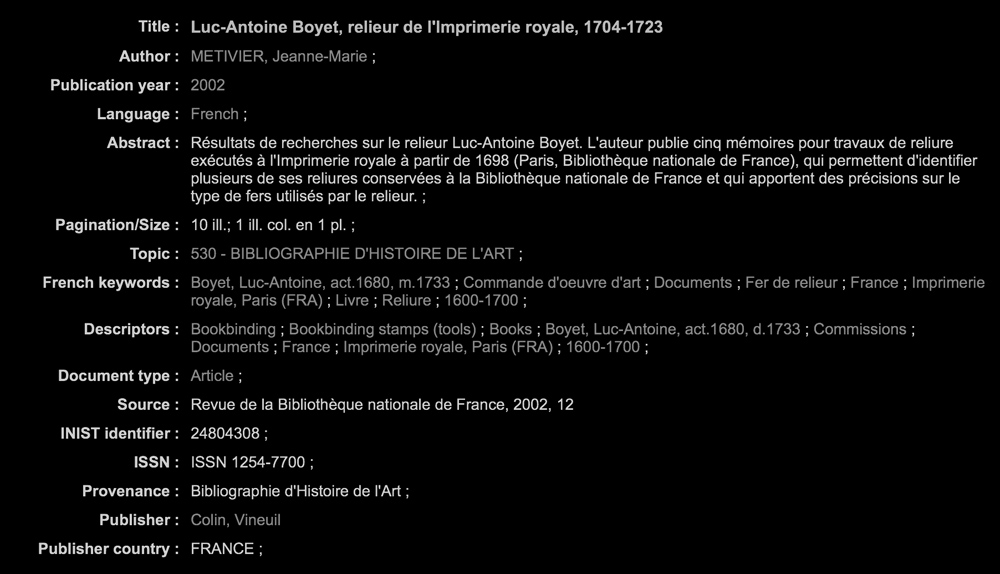
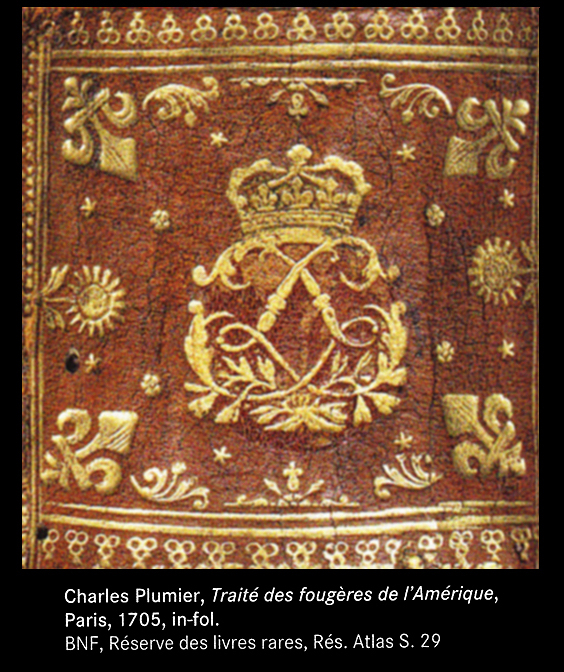
| In Comparative Diagram 2, shown below, we see our 1696 example from the dentelle compared with that shown on the 1705 spine. The detail of the 1705 example isn't as clear as we would wish, however a number of corresponding details suggest that these two imprints derive from the same tool. |
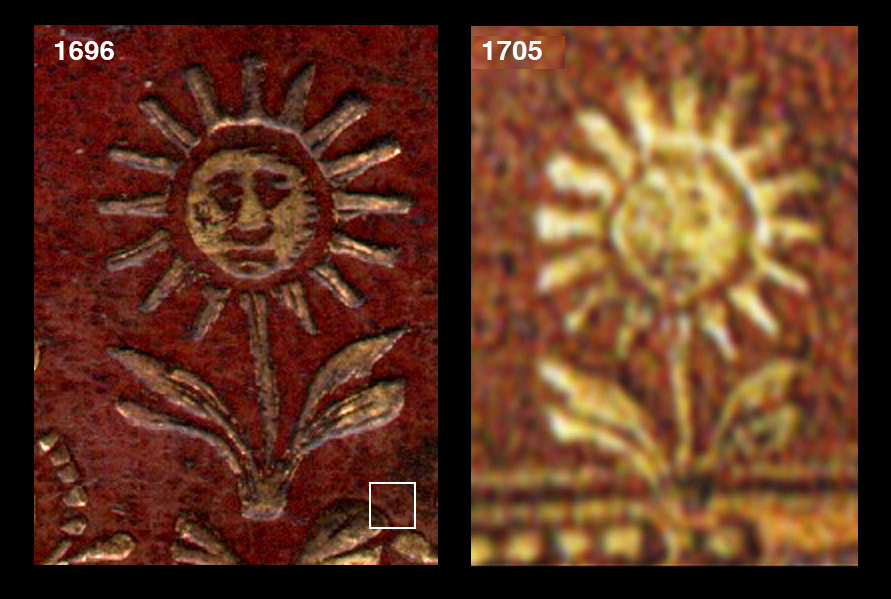
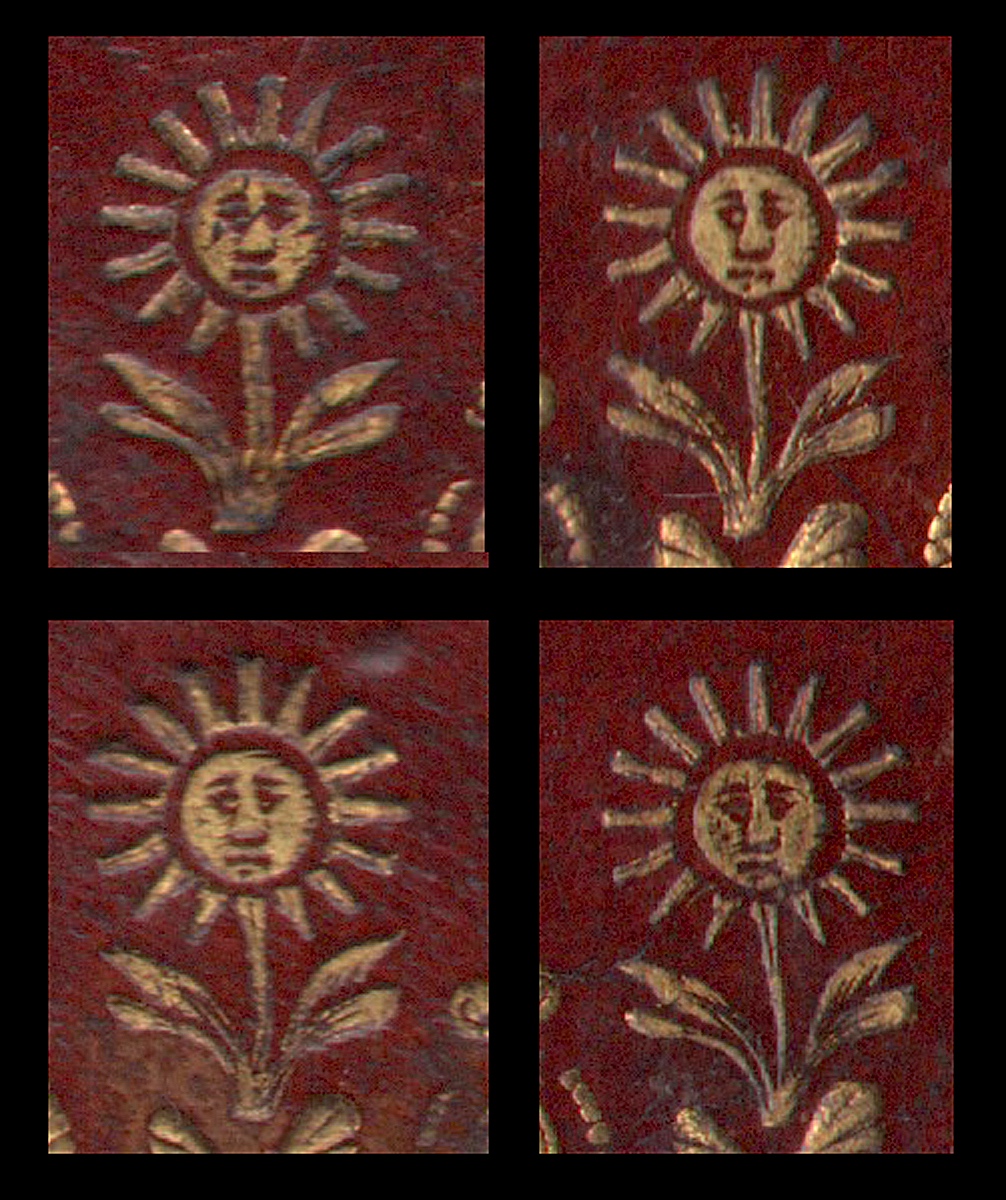
| In Comparative Diagram 3, shown above, we see a collection of sunflower imprints all from our 1696 Breviary. You can see from these examples, that were picked as being the best representative, clear imprints, that even these vary considerably. One imprint alone is rarely enough to define the Type or serve as a Type Model. I want to point out that Louis XIV (5 September 1638 1 September 1715), known as Louis the God-Given, Louis the Great (Louis le Grand) or the Sun King (Roi Soleil).Louis XIV chose the sun as his emblem. The sun was associated with Apollo, god of peace and arts, and was also the heavenly body which gave life to all things, regulating everything as it rose and set. |
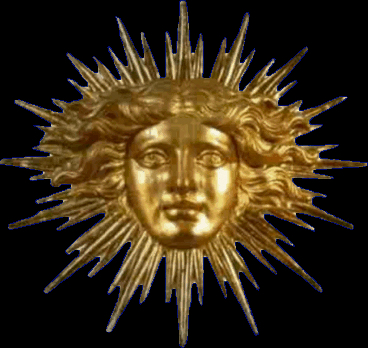
| Above I show a golden sun logo that appears often in an internet search for Louis XIV, I assume that it is probably an actual artifact associated with the reign of Louis XIV, and it is probably no coincidence that it closely resembles the sunflower (my name) imprint with 16 major petals or points. The fact that this imprint is found on our 1696 Breviary and on the Royal bindings, and particularly in the spine compartments, in an identical fashion, may suggest that our binding was made after Boyet became the Royal binder, and was perhaps owned by someone in the Royal entourage of Louis XIV |
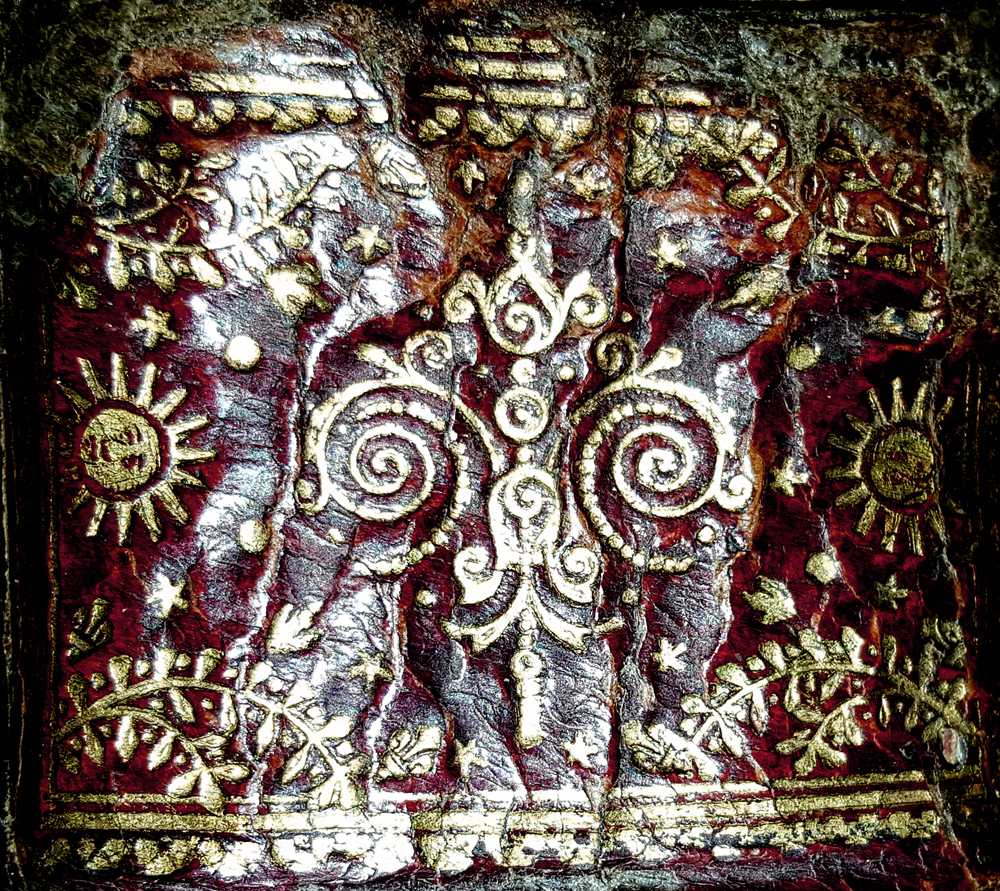
| I show above a photo with strong lighting to expose some of the smaller fleurons, here we discover tiny fleur-de-lis imprints as well as stars and flames. A study of Royal spine compartments reveals that fleur-de-lis are almost always present. Our 1696 binding no exception however the imprints are unusually small. I show them in the diagram below (designated as "a"). |
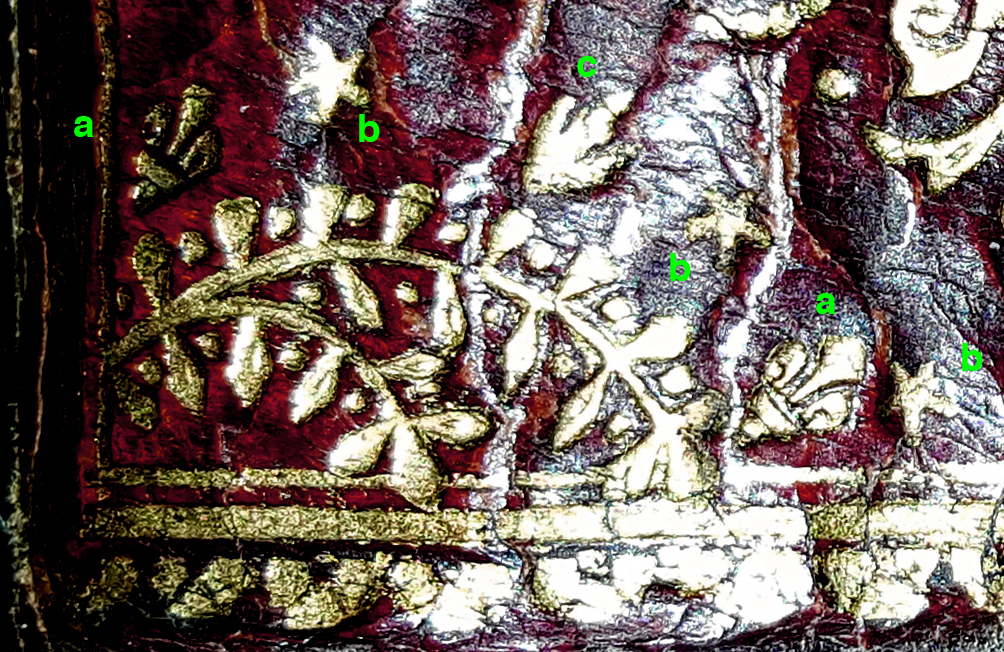
| On the next page we are going to look at more of these important imprints from the dentelle, made famous through their use in Boyet's retrospective bindings. Boyet produced some amazing bindings imitating the classic decorative work of the greatest binders of the first quarter of the 16th century, such as Mace Ruette, Le Gascon, and Esmerian's Maite Doreur... no small task you might imagine. How good were these copies? So good that they have fooled even the greatest experts right up to today! |
|
click here to return to the INDEX of new pages. see below links to previous work |
| Even experts are sometimes wrong, before you spend thousands on a book, please do your own research! Just because I say a certain binding can be attributed to le Maitre isn't any kind of guarantee, don't take my word for it, go a step further and get your own proof. In these pages I have provided you with a way of doing just that. |
| Virtual Bookings, created by L. A. Miller | return to the Home page of VIRTUAL BOOKBINDINGS |